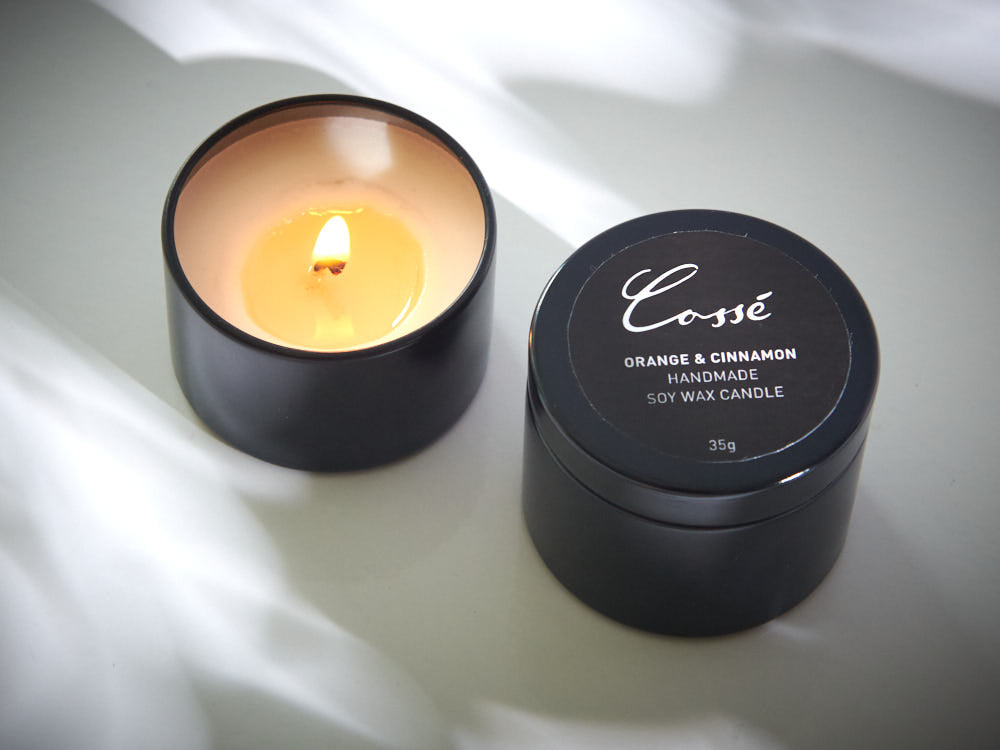Instill Your Home with the Fragrance of Crystal Soy Candles and Home Fragrance
Instill Your Home with the Fragrance of Crystal Soy Candles and Home Fragrance
Blog Article
From Wick to Wax: Comprehending the Chemistry Behind Soy Wax Candles and Their Environmental Impact
As we brighten our areas with the cozy glow of candles, there exists a world of intricate chemistry behind the relatively straightforward act of lighting a soy wax candle. The option in between soy and paraffin wax expands beyond mere aesthetics, delving right into the world of environmental impact and the very make-up of the materials. Understanding the molecular structure of soy wax and its combustion process clarifies the exhausts launched right into our surroundings. Join us as we unravel the clinical ins and outs behind soy wax candle lights and explore their effects on our setting.
Soy Wax Vs. Paraffin Wax
When comparing soy wax and paraffin wax for candle production, it is important to understand the unique attributes and advantages of each product. Soy wax is an all-natural, renewable energy stemmed from soybean oil, making it environmentally friendly and eco-friendly - home fragrance. On the other hand, paraffin wax is a result of oil refining, which elevates worries regarding its environmental influence and sustainability
Soy wax candle lights melt cleaner and give off much less residue contrasted to paraffin wax candle lights, making them a much healthier option for indoor air high quality. Additionally, soy wax has a lower melting factor, enabling a longer-lasting candle that distributes scent better. Paraffin wax, on the various other hand, has a tendency to shed faster and less easily, potentially releasing damaging chemicals into the air.
From a sustainability point of view, soy wax is preferred for its biodegradability and eco-friendly sourcing, straightening with the expanding customer preference for environmentally mindful products. While paraffin wax has actually been a typical selection in candle making due to its price and convenience of use, the change towards environment-friendly alternatives like soy wax is gaining momentum in the industry.
Chemical Make-up of Soy Wax

Combustion Refine in Soy Candles
The chemical structure of soy wax directly affects the combustion procedure in soy candle lights, affecting aspects such as burn time, aroma launch, and ecological influence. When a soy candle is lit, the warmth from the flame thaws the wax near the wick. This liquid wax is after that attracted up the wick as a result of capillary activity. As the fluid wax link reaches the fire, it goes through and evaporates combustion. The burning process entails the vaporized hydrocarbons in the wax reacting with oxygen airborne to create warm, light, water vapor, and carbon dioxide.
The More Info combustion effectiveness of soy candles is affected by the purity of the soy wax and the top quality of the wick. Furthermore, soy wax candles have a reduced ecological influence contrasted to paraffin candles due to their naturally degradable and sustainable nature.

Ecological Benefits of Soy Wax

Taken into consideration a lasting option to traditional paraffin wax, soy wax supplies noteworthy environmental advantages that make it a preferred choice among eco-conscious customers. Soy wax burns cleaner and produces less soot than paraffin wax, adding to far better interior air quality and decreasing the need for cleaning and upkeep. In general, the environmental advantages of soy wax straighten with the expanding demand for lasting and environmentally friendly products in the market.
Recycling and Disposal Considerations
Reusing and correct disposal of soy wax candles play a critical function in keeping ecological sustainability and minimizing waste in families and communities. When it pertains to reusing soy wax candle lights, the primary step is to make sure that the candle light has melted entirely. This can be attained by allowing the candle to melt till the wick is no more functional, and afterwards letting the remaining wax cool and strengthen. As soon as the wax has actually strengthened, it can be very carefully removed from the container.

In regards to disposal, if recycling is not an alternative, soy wax candles are biodegradable and can be safely dealt with in the majority of household waste systems. Nevertheless, it is always advised to talk to regional reusing facilities or waste monitoring solutions for particular standards on candle light disposal to make certain correct handling and environmental management.
Final Thought
In conclusion, the chemistry behind soy wax candle lights reveals their environmental advantages over paraffin wax candle lights. Soy wax, derived from soybean oil, burns cleaner and creates less residue when contrasted to paraffin wax.
When comparing soy wax and paraffin wax for candle light production, it is important to recognize the unique features and advantages of each product (soy candles).Soy wax candle lights shed cleaner and emit much less residue compared to paraffin wax candle lights, making them a much healthier selection for indoor air high quality.Considered a lasting option to typical paraffin wax, soy wax uses remarkable environmental advantages that make it a popular selection among eco-conscious consumers. Soy wax burns cleaner and produces less soot than paraffin wax, adding to much better interior air high quality and reducing the need for cleansing and maintenance.In verdict, the chemistry behind soy wax candles exposes their ecological benefits over paraffin wax candles
Report this page